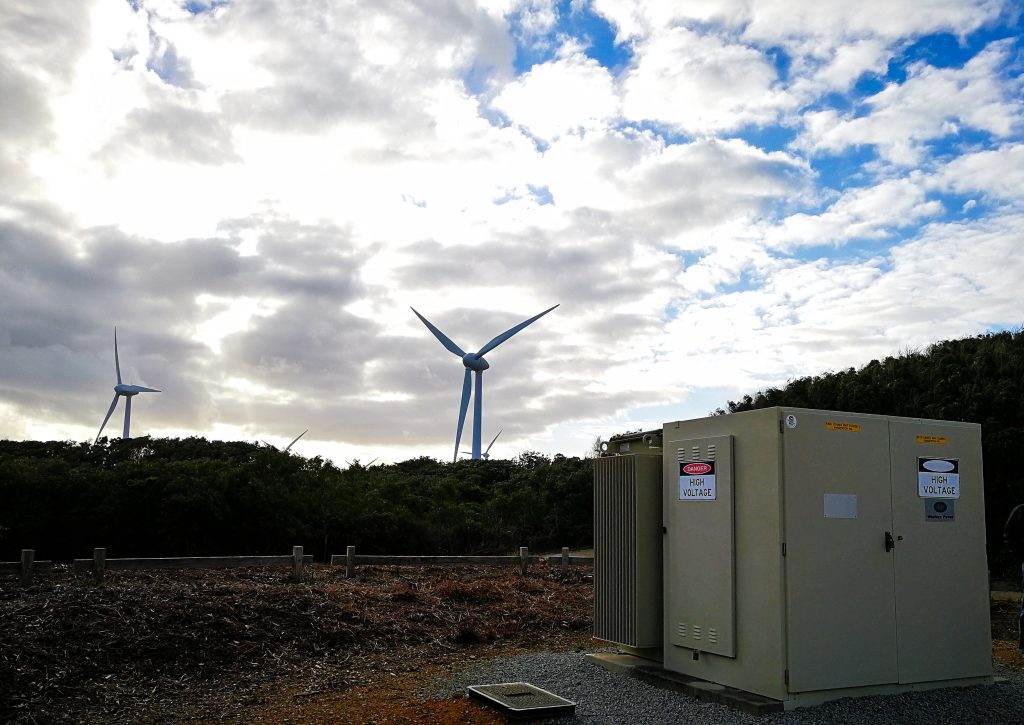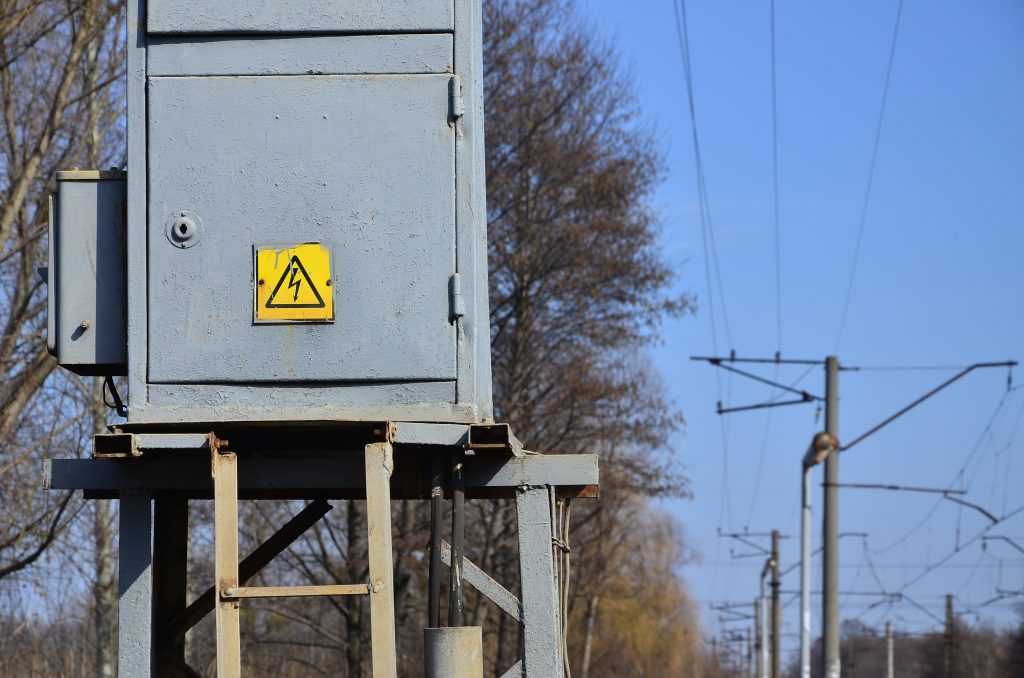

A fire anywhere is a major cause for concern, but electrical transformer fires can be an especially large risk. That’s why there are fire suppression systems available, designed to cope with the challenges associated with fire protection in these important and high-risk pieces of equipment. Today we’ll discuss:
A transformer fire is a blaze that occurs within and around a transformer. A transformer is a piece of equipment that moves electric energy from one AC circuit to another (or multiple others) while changing its voltage. Transformers are an integral part of our infrastructure, and have been used since the 1890’s as part of our modern electrical grid.
The two main purposes that transformers are used for are to:
Additionally, there are two factors that make transformer fires more likely to occur, and more dangerous when they do. The first factor is the high volume of electrical energy passing through a transformer, which generates a substantial amount of heat. The second is that many transformers utilize flammable mineral oil as an insulation and cooling fluid.
Transformers, with their known fire risks, have been very carefully engineered and regulated to reduce the danger of fire as much as possible. But accidents, mechanical failure, and electrical overload do still cause a number of transformer fires each year. According to T&D World:
“The average probability of a serious transformer fire is on the order of 0.06% to 0.1% per service year, or one fire per 1,000 to 1,500 transformer service years. In practice, this means 2.4% to 4% of all transformers can be expected to cause a fire during a 40-year service life.”
The likelihood of and causes for a transformer fire varies considerably by the type and size of the transformer. Transformer age, design, operating environment, and maintenance history will also impact fire risk.

In general, the most common transformer fire causes are:
Regardless of what causes transformers to spark and catch fire, there is an additional risk of transformer explosion during electrical fires. This is especially true of transformers that use mineral oil as an insulator and coolant. The mineral oil can quickly ignite and explode under certain conditions. This includes when a spark is present (as in a lighting strike or internal arcing) or when the mineral oil is overheated past the point of spontaneous combustion.
Alternatively, dry-type transformers are often used as a safer option for medium- and low-voltage needs (under 2.5-3 megavolt-amperes), especially for use indoors. Their biggest advantage is increased safety due to the lower fire and explosion risk. As their name implies, these transformers do not use oil to dissipate heat, but incorporate dry or gaseous mediums into the cooling coils instead.

There are three main varieties of dry-type transformers:
Dry-type transformers have advantages outside of simply decreasing fire and explosion risk, such as:
They do come with some disadvantages as well, however. These include:
Under ideal circumstances, we would proactively stop transformer fires before they started. But despite best practices, fires do occasionally occur. When a fire does occur, yangın söndürme sistemleri help to contain and suppress the fire as safely and efficiently as possible.
There are a variety of suppressant delivery systems that can be used to control or extinguish transformer fires. Water is the most common fire suppressing medium in general, but it is not always the most ideal for an electrical fire, especially in areas with other sensitive electrical equipment.
Types of water-based fire protection systems include:
Types of non-water-based fire protection systems recommended for transformers:
Nero National Fire Protection Association (NFPA) develops codes and standards for fire safety using experts with a wide range of professional expertise. Their requirements are used by many specific organizations and authorities having jurisdiction, so they are legally enforceable in many cases in the United States.
NFPA 850, Recommended Practice for Fire Protection for Electric Generating Plants and High Voltage Direct Current Converter Stations, specifically deals with transformer fire protection standards. It includes recommendations for transformers located both indoors and outdoors.

It’s clear that having an effective, reliable system in place is needed to protect human life and any property that is nearby when a fire occurs. Two well-performing options include an indirect high-pressure and/or engineered system. The specific benefits these options can provide include:
As OSTİM Defense and Aerospace Cluster (OSSA), we held a cooperation meeting with the Ministry of National Defense General Directorate of Technical Services. The opening remarks were delivered by OSSA Chairman of the Board, Mr. İbrahim Yarsan; ASFAT General Manager, Prof. Dr. Mustafa İlbaş; and Major General Ercan Eroğlu, General Director of Technical Services at the Ministry of National Defense. Following the opening session, experts from the Ministry of National Defense delivered informative presentations on “Introduction to MoD Military Factories” and “MoD Facility Security Clearance / Production Permit Certificate Processes.” As Nero Industry, we had the opportunity to present our products and capabilities to the MoD delegation and engage in bilateral cooperation meetings throughout the program.
*Yasal Uyarı ve Fikri Mülkiyet Beyanı:
Bu web sitesinin tamamı, metin içerikleri, grafikler, logolar, görseller, fotoğraflar, çizimler, teknik ve bilimsel çizimler, ses ve video klipleri, animasyonlar, görsel-işitsel kayıtlar, yazılımlar, kaynak kodlar, veritabanları, tasarım unsurları, kullanıcı arayüzü bileşenleri ve diğer tüm teknik ve yaratıcı materyaller ile bunlara ilişkin tüm fikri ve sınai mülkiyet hakları dahil ancak bunlarla sınırlı olmamak üzere NERO Endüstri Savunma San. A.Ş.’nin veya usulüne uygun olarak yetkilendirdiği lisans sahiplerinin münhasır mülkiyetindedir. Söz konusu içerikler; Türkiye Cumhuriyeti mevzuatı, özellikle 5846 sayılı Fikir ve Sanat Eserleri Kanunu, Türk Ticaret Kanunu, Türk Ceza Kanunu ile Türkiye Cumhuriyeti’nin taraf olduğu uluslararası anlaşmalar ve sözleşmeler, başta Fikir ve Sanat Eserlerinin Korunmasına İlişkin Bern Sözleşmesi, Sınai Mülkiyetin Korunmasına Dair Paris Sözleşmesi, TRIPS Anlaşması, WIPO Telif Hakları Anlaşması ve yürürlükte olan veya gelecekte yürürlüğe girecek ilgili Avrupa Birliği Direktifleri ve Tüzükleri kapsamında korunmaktadır. NERO Endüstri Savunma San. A.Ş.’nin yazılı izni olmaksızın yukarıda belirtilen içeriklerin tamamının veya bir kısmının doğrudan ya da dolaylı olarak, aynen ya da değiştirilmiş şekilde çoğaltılması, değiştirilmesi, iletilmesi, yayılması, yeniden yayımlanması, başka platformlara yüklenmesi, saklanması, kamuya açık olarak gösterimi ya da icrası, ticari amaçlarla kullanımı veya herhangi bir şekilde izinsiz kullanımı kesinlikle yasaktır. Bu tür fiilleri teşvik eden, kolaylaştıran ya da destekleyen her türlü eylem de aynı şekilde yasaktır. Bu hakların ihlali, ilgili fikri mülkiyet ve/veya haksız rekabet mevzuatına aykırılık teşkil edebilir ve ilgili ulusal ve uluslararası hukuk düzenlemeleri kapsamında hukuki ve/veya cezai sorumluluğa yol açabilir.
Nero Endüstri, Türkiye'nin önde gelen savunma sanayi üreticilerinden biri olarak yangın söndürme, KBRN, lazer uyarı sistemleri, sis havanı ve askeri jeneratörler geliştirmektedir.
NCAGE KODU : T9830